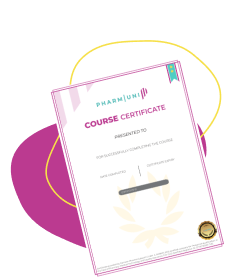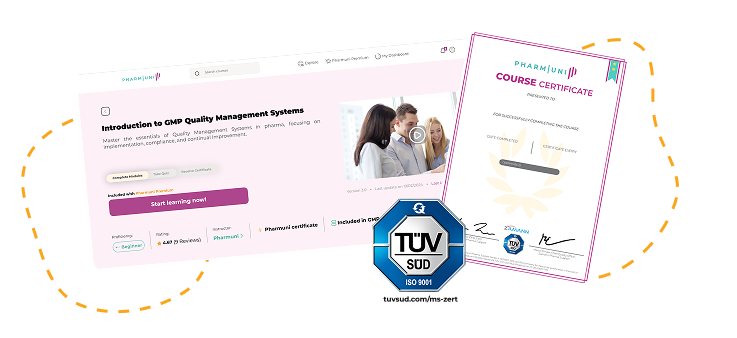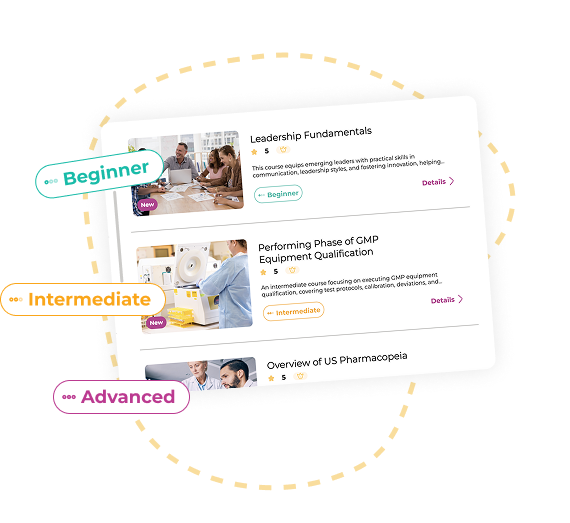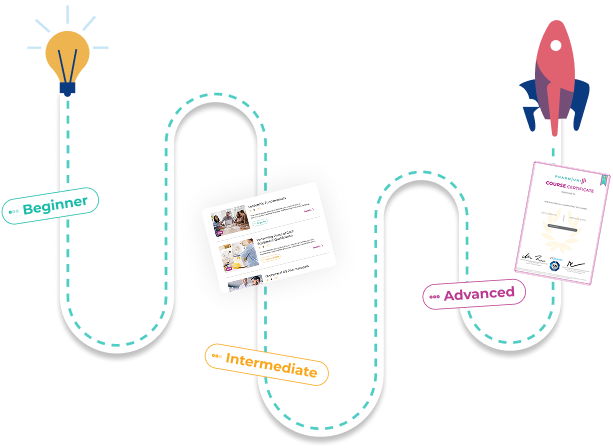Unlock the potential of your career in the Pharma industry with our online courses and qualifications.

Pick a career path, follow its guided course roadmap, and secure industry-verified credentials in a few months.

Earn career credentials from industry leaders that demonstrate your expertise.
GMP-ready Batch Planning, Scheduling & Release Skills—Online, Anytime

Slash release times, ace inspections, and secure industry-recognized certificates with immersive courses built by batch-planner specialists. Learn at your pace, on any device, and keep every audit trail bullet-proof.

Why 60,000+ learners, universities and top pharma firms rely on Pharmuni
Every public Trustpilot review to date is 5-star.
60 000+ users in 152 countries have taken Pharmuni courses since launch.
Courses are built by Zamann Pharma Support, an audited QMS provider founded in 2017 in Lampertheim, Germany.
Hundreds of graduates share new Pharmuni certificates on LinkedIn every month, boosting their CV and visa applications.
Partner institutions include Hochschule Bremen, CAU Kiel and TH Bingen—display their logos for instant recognition.
Zamann’s ISO-audited auditors train Europe’s leading pharma manufacturers.
Serialized, traceable batches can be pinpointed anywhere in the world, enabling rapid, targeted recalls and deterring counterfeits.
EU GMP Annex 16 and related guidance mandate documented oversight of batch creation, change-over, and release; gaps trigger costly 483s and warning letters.
Optimized batch scheduling and right-sized runs cut change-over losses and idle equipment, boosting OEE and throughput.
Tight batch control catches deviations early and ensures each dose meets potency, sterility, and purity specs
Inventory & Cost Control — ERP-integrated batch management provides live expiry dates, stock levels, and capacity data, preventing over-production and write-offs.
real-world obstacles pharma professionals face—and how Pharmuni clears the path
Classroom GMP courses cost $400–$4,000 per seat once travel and downtime are added, overwhelming lean L&D budgets.
Round-the-clock production rosters and global time-zone teams leave virtually no window for live, instructor-led sessions.
Pulling operators off the line for classroom days drives costly downtime and overtime premiums.
Fresh FDA and EU drafts (Part 11, §211.110, Annex 15) outdate paper SOP binders almost overnight.
Teams migrating from handwritten records to EBR/MES struggle with ALCOA+ digital workflows.
ncomplete or missing batch records remain a top Form 483 finding and trigger warning letters.
Explore 45+ expert-curated pharma courses on Pharmuni, including a Batch Management series that spans planning, execution, release, storage & transport, and post-market surveillance. Earn ISO-9001 backed certificates, tackle interactive quizzes, and study on any device—skills you can apply on your very next shift.


Our two guided career paths—GMP Basics for newcomers and Quality Assurance Specialist for rising QA leaders—sequence the exact courses you need in the right order, so you always know what to learn next, earn stackable certificates, and reach job-ready competence faster.
Pharmuni Premium turns learning into a career path with 50+ courses, AI tools, and career coaching to get you hired.
50 + expert-led pharma courses & quizzes
Industry-recognised certificates issued under an ISO-9001 quality system
Monthly VIP career coaching
AI-powered Skill Tree
Pharma-focused résumé & cover-letter builders
Mobile-friendly, 100 % self-paced platform



Pharmuni Premium gives you 50+ industry-aligned courses, credentials, VIP coaching, job tools trusted by professionals and more—for less than the cost of a single in-person training session.
Monthly: €39.99/mo
Annual: €33.25/mo (Save €80.88 yearly)
(most popular with immigrants)
We use cookies to improve your experience on our site. By using our site, you consent to cookies. Privacy Policy
Manage your cookie preferences below:
Essential cookies enable basic functions and are necessary for the proper function of the website.
These cookies are needed for adding comments on this website.
Google Tag Manager simplifies the management of marketing tags on your website without code changes.
These cookies are used for managing login functionality on this website.
Statistics cookies collect information anonymously. This information helps us understand how visitors use our website.
Google Analytics is a powerful tool that tracks and analyzes website traffic for informed marketing decisions.
Service URL: policies.google.com
Clarity is a web analytics service that tracks and reports website traffic.
Service URL: clarity.microsoft.com
Marketing cookies are used to follow visitors to websites. The intention is to show ads that are relevant and engaging to the individual user.
Facebook Pixel is a web analytics service that tracks and reports website traffic.
Service URL: www.facebook.com
LinkedIn Insight is a web analytics service that tracks and reports website traffic.
Service URL: www.linkedin.com
You can find more information in our Privacy Policy and Privacy Policy.